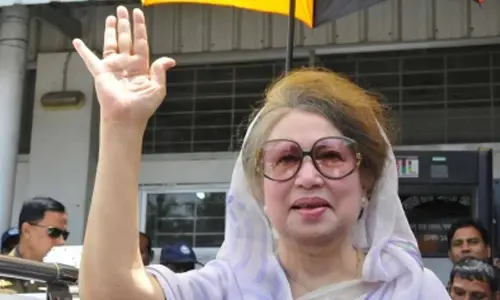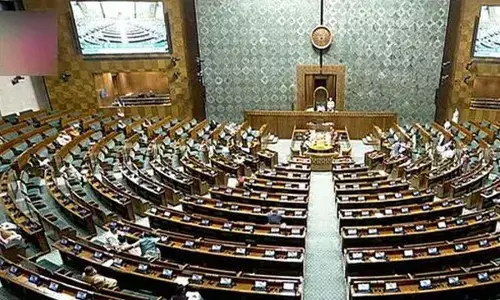Behind market mayhem

India has once again witnessed a blood bath with lakhs of crores of market capitalisation wiped out in a single day crash.However, the government completely discounts the domestic factors behind the collapse.
.jpg) India has once again witnessed a blood bath with lakhs of crores of market capitalisation wiped out in a single day crash.However, the government completely discounts the domestic factors behind the collapse. Finance Minister Arun Jaitley holds external factors responsible for the volatility.
India has once again witnessed a blood bath with lakhs of crores of market capitalisation wiped out in a single day crash.However, the government completely discounts the domestic factors behind the collapse. Finance Minister Arun Jaitley holds external factors responsible for the volatility.
RBI chief Raghuram Rajan assures India has resources to face this undue volatility. However he said that it was not the role of RBI to elevate sentiments unduly to deliver booster shots to the stock markets. But such propitious remarks alone do not suffice. Strong regulatory structures are needed to deliver sustainable markets. India’s valuable savings cannot be held ransom to rapacious and maverick markets.
The magnitude of Monday’s Mayhem should be understood in its full perspective. It is the biggest single day fall ever. The sensex fell by 5.94 per cent during the course of the day’s trading. This is the 29th biggest fall ever. The immediate explanation offered by market pundits is the contagion effect of the Chinese meltdown. Chinese stock market fell around 8.5 per cent on Sunday.
Any panic in global markets would obviously pare Indian markets too, as global investors will resort to selling spree to limit their losses in a market largely driven by sentiment. The Chinese central Bank has effected biggest devaluation of the yuan against the dollar in nearly two decades. It was aimed at revitalising its sluggish export sector.
On August 21, 2015, Chinese factory sector shrank to its lowest level since January to March 2009. This data made global markets jittery. But, India does not export a major chunk of its products to China. Then, why should signs of turbulence of Chinese economy should trigger such an extreme reaction from Indian stock market, though the ripple effect of the world’s second largest economy on India cannot be completely ruled out? During panic, investors sell off in those markets where they are sitting pretty on profits.
Market experts reap solace from such explanations which are partly true. But, a closer look at the structural dimensions need to be analysed. There is a void between the stock markets and the real economy. Low participation of the small investor robs the immunity from the markets.
Of late, Indian markets have become more vulnerable to the predatory attacks of footloose portfolio capital. The report of the Special Investigation Team on black money in its third report made recommendations that made such butterfly capital nervous. The SIT called for identification of the beneficial ownership or ultimate owner of instruments called Participatory Notes (P-Notes).
It also recommended that the right to trade and transfer those notes should be revisited. China stock decline might have had its effect. But, the recent free fall of Indian stocks was due to the fear that government may act on SIT recommendation and scrutinise these P–Notes that allegedly represent round tripping of domestic dirty money. Undeterred by such volatility, India should clean up its financial markets.
Woman injured in stabbing attack in Tokyo, suspect at large
Bengal cop booked for murder over mysterious death of woman home guard, SIT to probe case
Staffer recalls horror of 7-kg gold robbery by armed gang in Karnataka’s Hunsur
25-Year-Old Airline Cabin Crew Member Dies At Gurugram Party; Police Begin Investigation



















